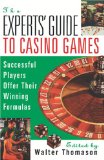Doc History of Slots Machine
There has been some controversy on the history of slot machine as to who invented slot machines between Charles and Pitt and Sittman.
Pitt and Sittman

Pitt and Sittman are believed to have designed the first slot machine in 1891 which had five drums and every spin displayed a poker hand. There was no provision for paying back and the machine owners paid manually according to the poker hand displayed. At that time slot machine rewarded winners with drinks and that is why there was great similarity between slot machines and vending machines. Some cards were excluded from slot machines during those times to make it impossible to spin a royal flush and the history of house edge goes back to that.
Charles Fey
Charles Fey is believed by some to be the inventor of slot machine. His first slot machine was made in San Francisco and was named Liberty Bell. It is from Liberty Bell that more slot machines were developed as they gained popularity first in San Francisco. Fey's original slot machines did not have the fruit symbols found in today's slot but had stars, horse shoes, suits from playing cards including diamonds, spades and hearts instead.
Fey later redesigned his machine to make a slightly improved version and he called it Operator Bell Slot machine. At this time he included fruit designs, cherries and the number 7.
Fey's latest design was copied by other early manufacturers to make gum dispensing machines. At the same time there was growing sentiments against slot machine and some of the gum vending machines were victimized along side the real slot machines. The Bell-Fruit Gum Company of Chicago was the company largely responsible for stealing Fey's technology and using it to develop their own dispensing machines. A bar of gum which the company introduced on the slot machine as a marketing symbol has been retained on slot machines today.
Slots Ban
Antigambling sentiments grew in most of Western U.S. had the governing authorities soon banned slots machine in much of western states. Slots' history nearly came to a stand still in 1906 following the San Francisco earthquake which caused great damage to the bay area destroying the slots factory as well at a time when the California and Nevada legislatures had outlawed slots machines and slots games.
Bugsy Siegel
Bugsy Siegel, considered the father of Las Vegas Strip, commissioned the design and development of a better and improved slot machine which could provide some amusement to the wives and girlfriends of casino players so he needed a better machine. This led to the development of electric slots in the early 1960s. The slot machines' design rapidly changed from Fey's designs to modern day slots which were automated, fairer and easier to operate making it possible to station many in the casino at the same time.
 Do not know what tips are really useful for playing your favorite casino game? Those which are given by professional, of course! Get acquainted with the fullest set of perfect recommendations be leading casino gamblers.
Do not know what tips are really useful for playing your favorite casino game? Those which are given by professional, of course! Get acquainted with the fullest set of perfect recommendations be leading casino gamblers.